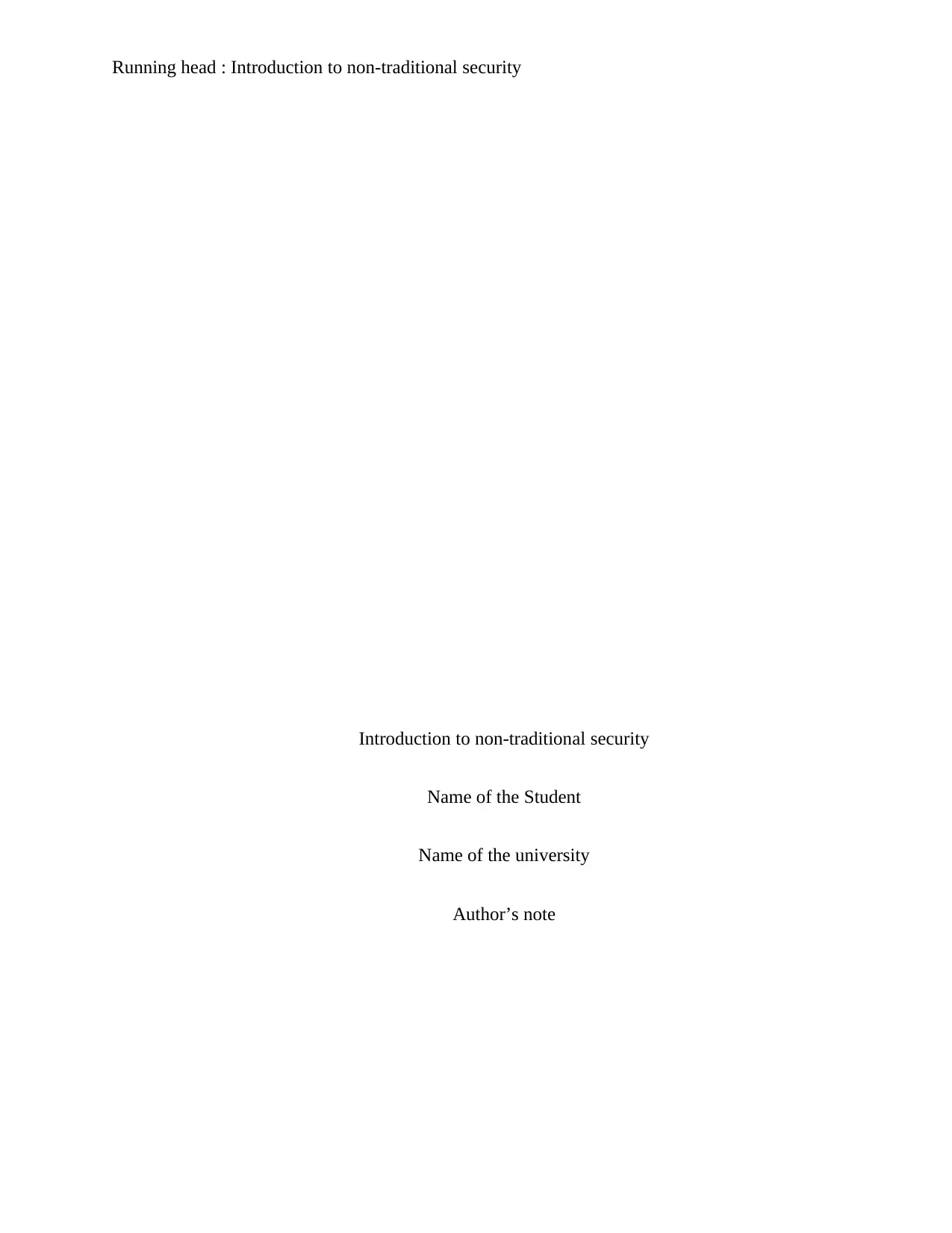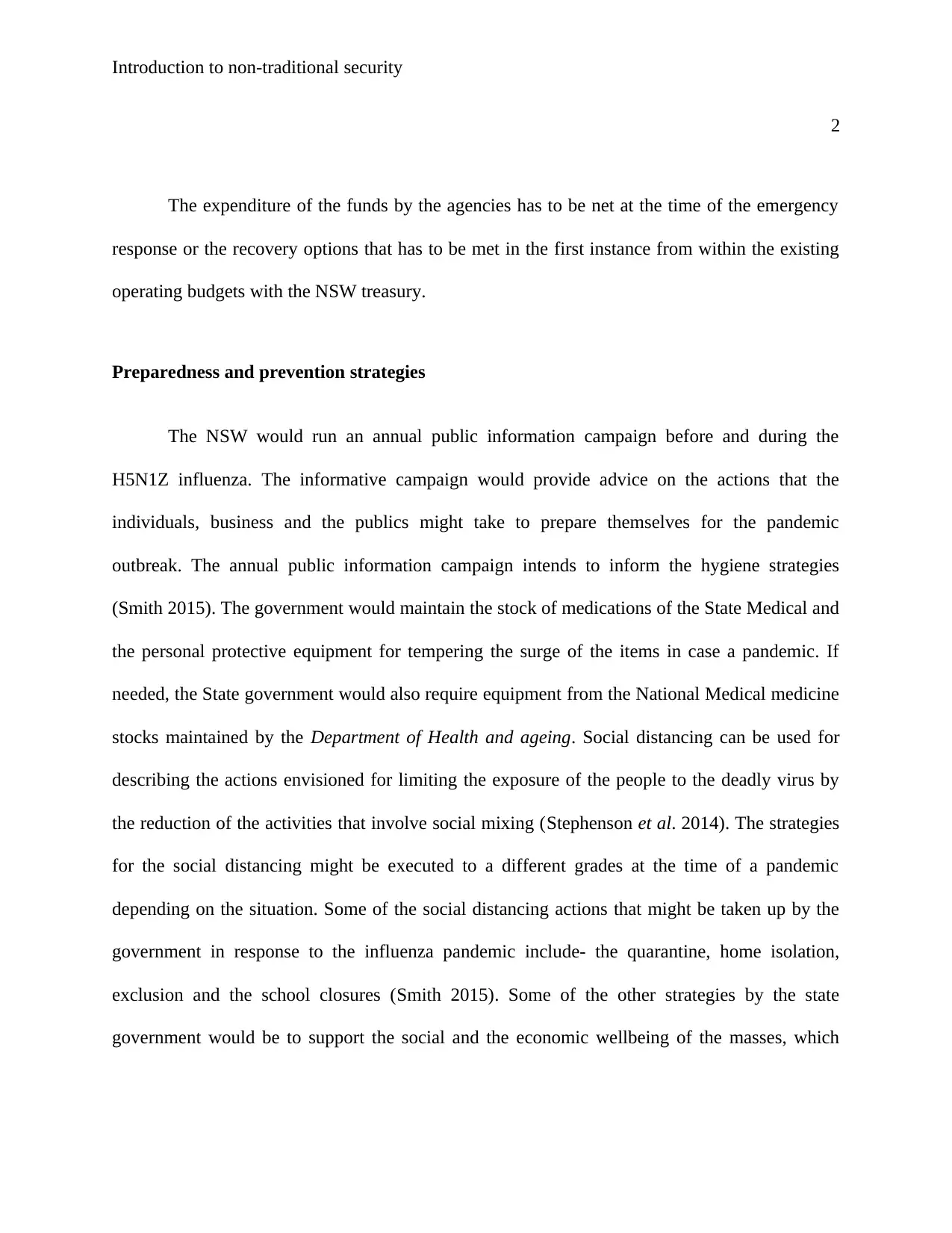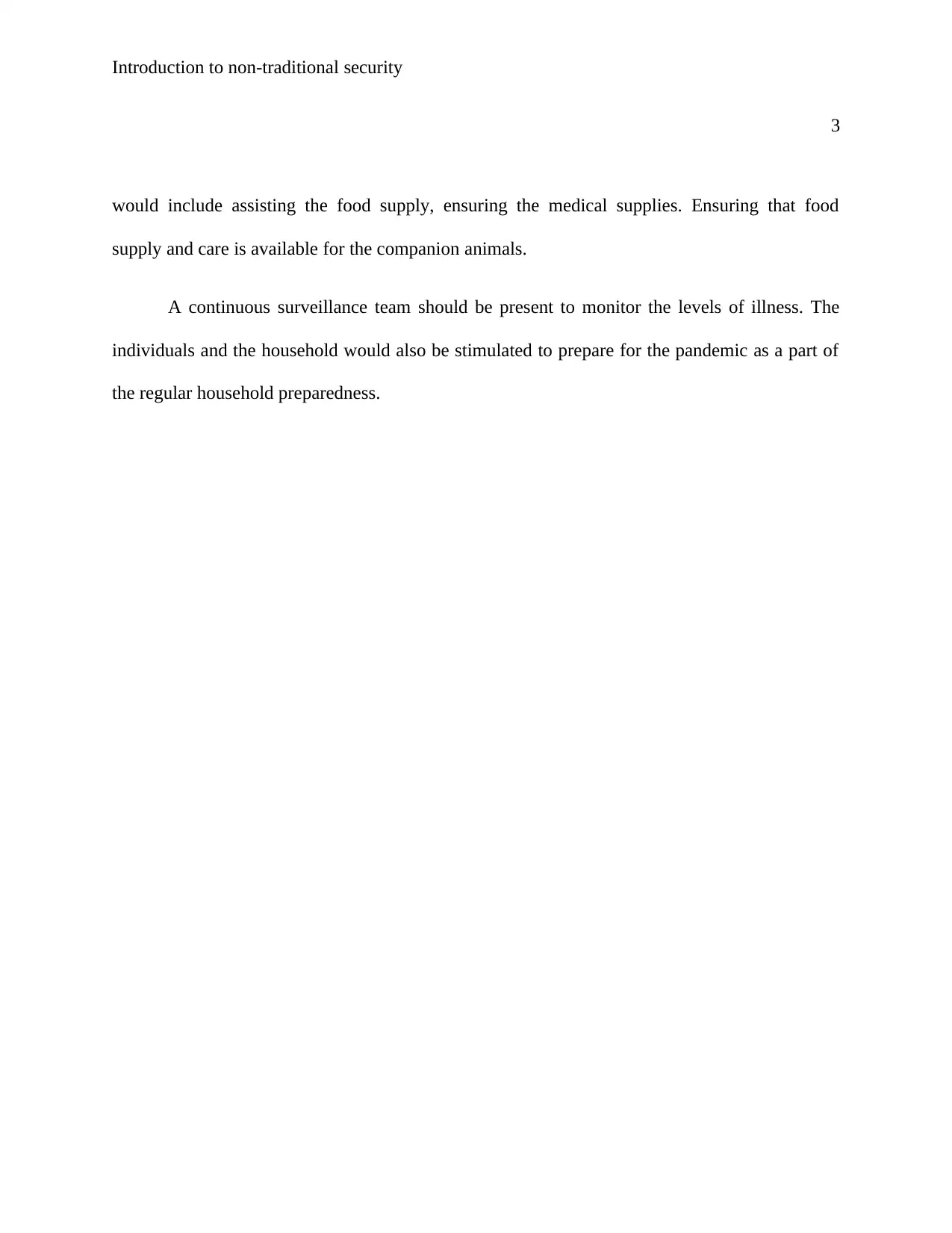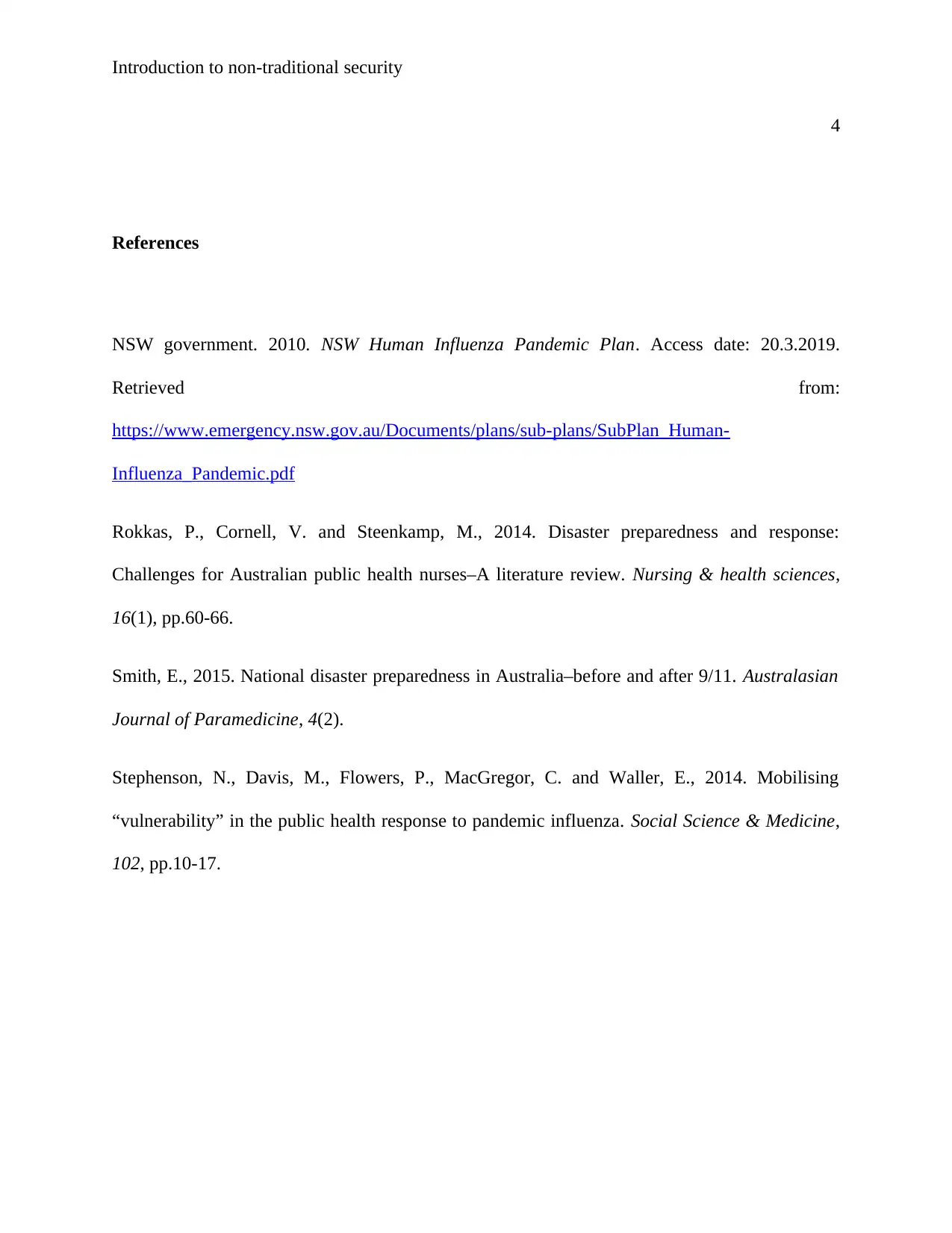NSW Government's EMPLAN: A Response to Non-Traditional Security Threat
VerifiedAdded on 2023/04/10
|6
|663
|472
Report
AI Summary
This report, prepared on behalf of Group 2 representing the NSW state government, outlines the emergency management plan (EMPLAN) for responding to a pandemic influenza outbreak. It details the development of a combat agency, public information campaigns, and the establishment of a State Emergency Recovery Controller. The plan emphasizes preparedness and prevention strategies, including public information campaigns on hygiene, medication stockpiles, and social distancing measures like quarantine and school closures. Furthermore, it highlights the importance of supporting social and economic well-being, ensuring food and medical supplies, and continuous surveillance of illness levels. The document references the NSW Human Influenza Pandemic Plan and other relevant literature, providing a comprehensive overview of the state government's approach to managing a pandemic influenza event. Access more solved assignments and study resources on Desklib.
1 out of 6













![[object Object]](/_next/static/media/star-bottom.7253800d.svg)